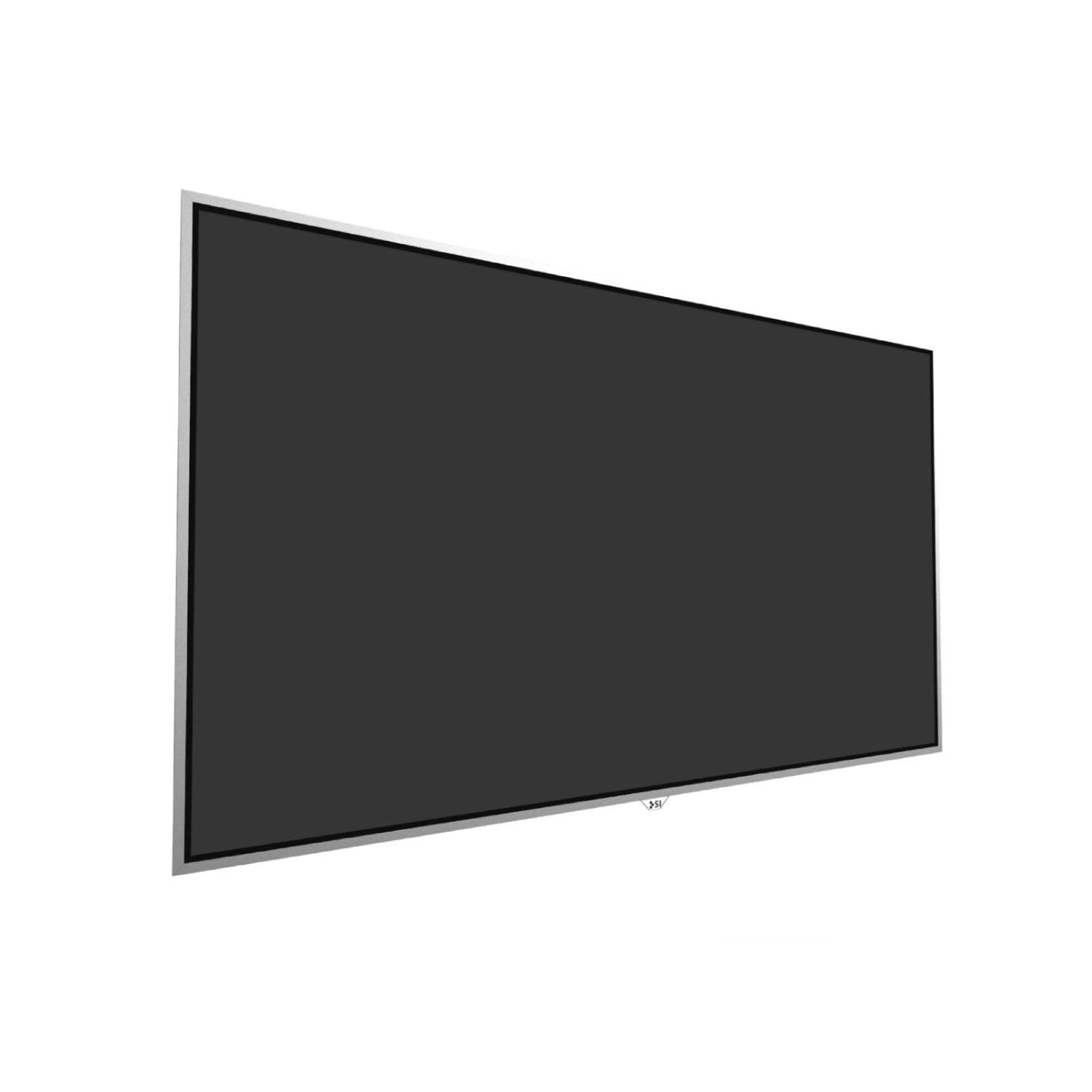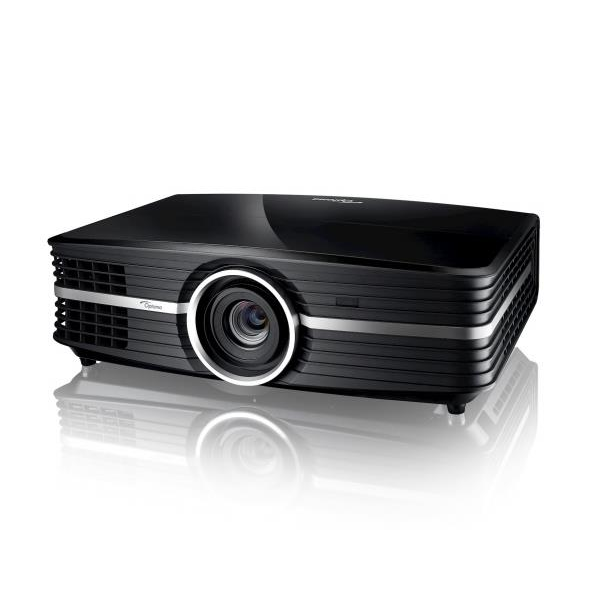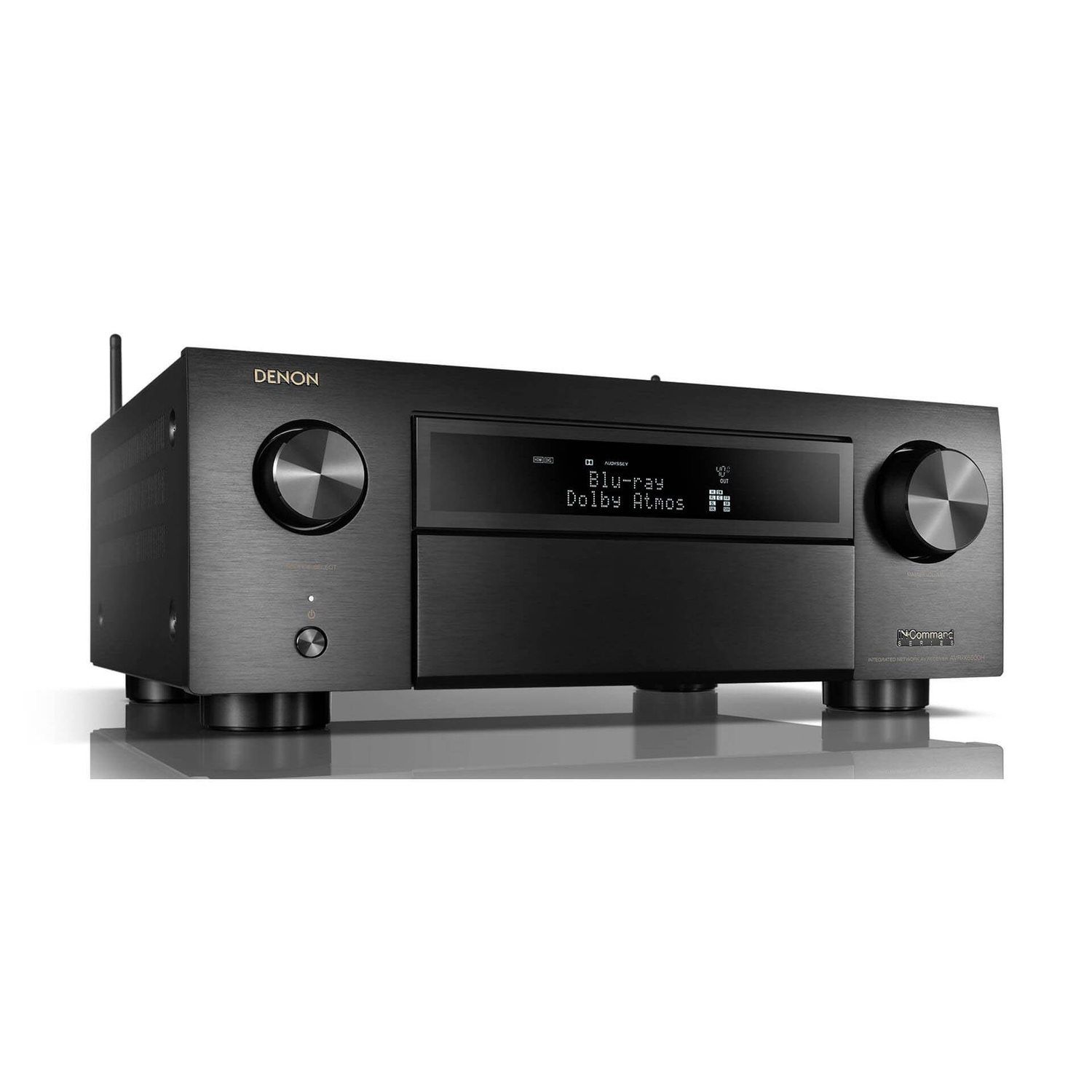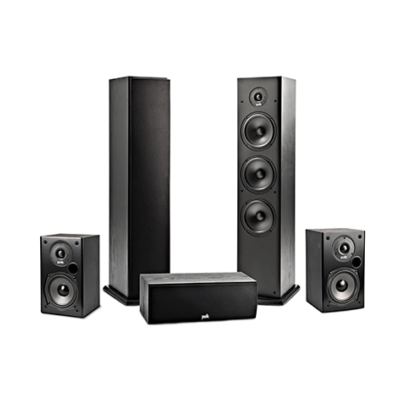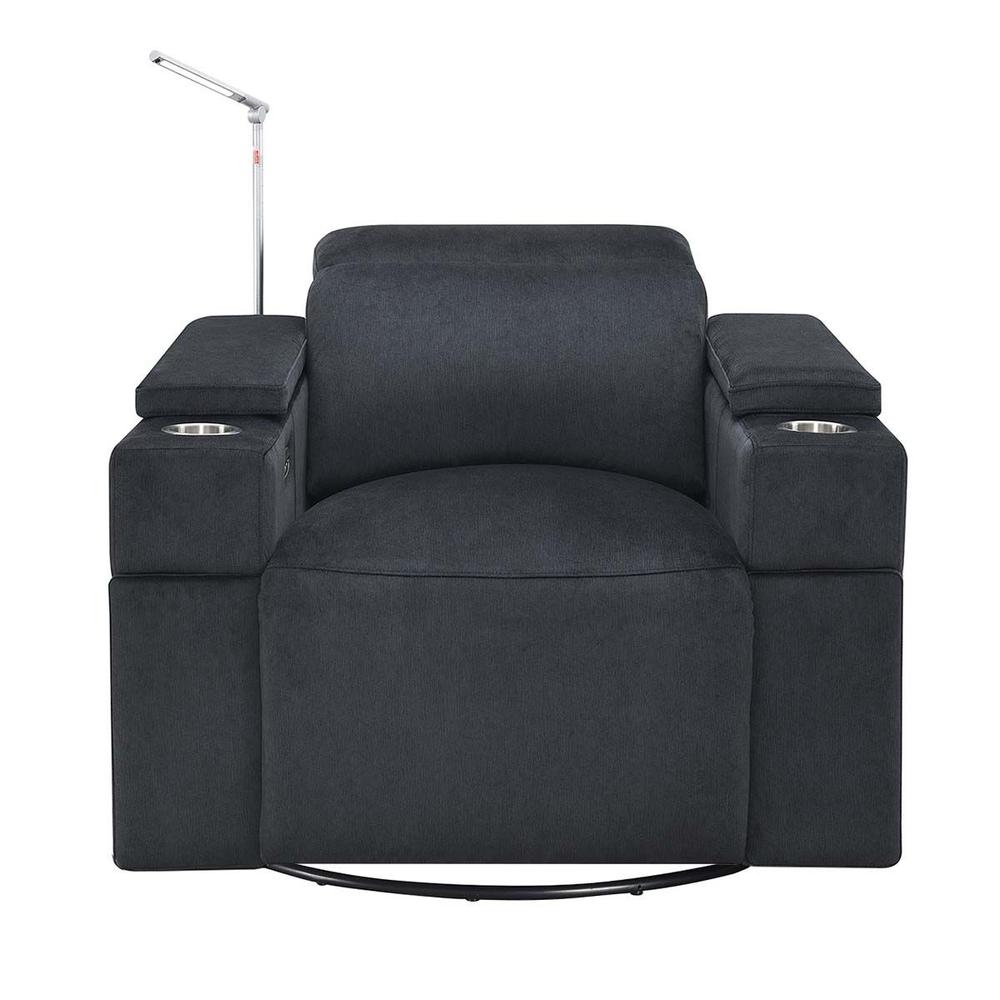Tips for home theater audio systems
A home theater space is a place where one should have a convenient and comfortable lifestyle.

When enthusiasts assemble their home cinemas for the first time, they prioritize functionality and purpose. While it may not warrant much thought to every homeowner, fun and entertainment should always be on the top of the list.
With these tips, you can transform any room in your home into an entertainment haven. Having an all-powerful surround sound audio system in your home theater is an impressive addition to this purpose that will make all of your friends jealous.
Home Audio System And Its Importance
Watching a movie, playing video games, or hosting a party in your home have one thing in common: there won’t be much fun without good sounds and music. Undeniably, having a good sound from your audio equipment adds excellent ambiance and energy to your home theater room.
Home audio equipment are specific acoustic electronics meant for home use. Every piece of equipment can make or break your appetite for sound. Along with the right equipment choice, your home movie theater audio system’s orientation, position, and overall setup are essential for the best sound experience.
If your family enjoys activities requiring sounds, having an entire audio system saves the hassle of renting equipment from time to time. Additionally, it gives you the freedom to move your audio equipment and furniture according to your setup preference.
With several audio equipment and brands in the market, it can be overwhelming to choose the best ones. Should you buy the most expensive one? Would it be better to purchase an entire set?
To answer these questions, here are noteworthy considerations when purchasing home theater audio equipment:
1. Know Your Purpose And Budget
You shouldn’t expect an in-depth and realistic movie experience at home if you only have television and basic speakers. Before looking for any audio equipment, assess your sound needs according to your interests and lifestyle.
Does your family have a movie night every week? Do you use these pieces of equipment for professional purposes? Are there people in the house that might get disturbed with your sounds?
Setting your purpose allows you to seamlessly plan your setup, making the most out of your hunting and buying experience. Also, establishing a clear audio plan allows you to find the best audio solutions that fit your needs.
Additionally, your purpose and budget go hand-in-hand. For instance, if you’re practicing your music and production skills at home, you’ll need a bigger budget. On the other hand, a simpler audio system with a more budget-friendly price will suffice for entertainment use.
Homeowners who prefer to hire an audio system expert or contractor will greatly benefit from providing their purpose and budget. This is because these sound experts use tools, like an audio analyzer, and techniques in curating a home stereo system for every need.
2. Know The Essential Audio Components
A home audio system is composed of fundamental components, each of which has an assigned function. Some homeowners prefer to buy an audio system bundle to save time and hassle of searching. On another note, researching each component offers the advantage of scoring the best ones in the market.
Essentially, the basic pieces of a home stereo system involve:
-
Audio-Video Source:
To play music and videos, you’ll first need the source where these songs and videos will play from. These include 4K media players, Blu-ray players, streaming services, such as Netflix, and more.
With a comprehensive audio or video source, you can play different content types–ranging from education to entertainment.
-
TV Screen or Projector:
You can opt for OLED and other 4K HDR TVs in your home theater. But for a truly immersive cinematic experience in your home go for a larger than life projector and screen combo. A high-definition video projector display with excellent resolution is the best duo during your movie night.
That being said, in terms of screen size, bigger isn’t always better as you have to consider viewing distance, TV placement, and room size. However, we typically recommend getting the largest size you can fit and afford because no one has ever wished they got a smaller size projector screen.
-
A Matching Pair of Speakers:
These components focus on delivering the audio output from your sources. If you’re planning to get speakers and a receiver, it’s more convenient to choose your speakers first because your receiver will depend on them.
Generally, the more speakers, the merrier your experience is. An ideal true surround sound setup has a minimum of six speakers:
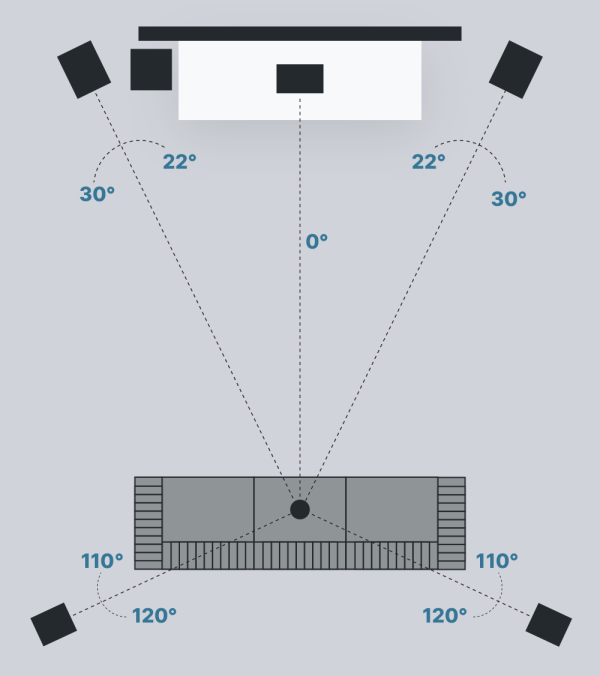
- 1 Center speaker
- 1 Right and left speaker
- 2 Rear right and left speakers
- 1 A subwoofer
If you don’t have enough budget for these speakers, you can start with a pair of speakers placed on the right and left of your TV. This is called a “stereo” with a 2-channel setup. Depending on your space and personal taste, they can be floor-standing, on a bookshelf, or in-wall and in-ceiling.
3. Receivers and Amplifiers
Lastly, adding a receiver to your sound arrangement backs up the entire system. Stereo receivers are meant for music only. On the other hand, an audio-video (AV) receiver performs well on a home theater setup.

An AV receiver receives, interprets, and processes audio signals before delivering them to your TV and speakers. The most important thing is to guarantee that your receiver has enough channels for the number of your speakers.
If you have more to splurge on for an enhanced home theater experience, a separate processing component, like amps and preamps, will boost audio signal amplification and distribution.
4. Assess Room Size and Dimensions
When designing a home theater setup, there are several areas to position your audio system–bedroom, living room, or even a designated entertainment or theater room. It’s important to look at your chosen space and measure its size and dimensions because it’ll affect the entire audio system.
Try asking sound experts for audio component recommendations and they’ll immediately ask about your room’s size. The main reason behind this isn’t to determine the right size of speakers, but to identify how the room’s available space and characteristics will affect the sound quality.
As a rule of thumb, smaller speakers are perfect for small, enclosed rooms. Large speakers will only take a lot of space and create a muddy, bass sound. Larger and open areas will benefit more on larger speakers, making the audio experience more immersive and seamless.
5. Choose Your Home Theater Sound System
Building a home theater with the best theater solution can make your experience comparable to public movie theaters. Fortunately, people who prefer to stay at home and watch movies, but want an immersive experience, can build their own. Also, home theaters are what high-tech homes have today.
Each home theater system has its perks and drawbacks:
-
Home-Theater-In-a-Box:
Has the easiest setup and installation, and can also be the least expensive option, but don’t have the best audio quality.
-
Soundbars System:
They’re ideal for limited space and budget as they already have built-in center and side speakers. It’s your choice to add rear speakers and a subwoofer.
-
Wireless Home Theaters:
With this, you’ll have an easier and less installation mess, such as wall drilling and running wires. Also, the components can be rearranged with ease, and you can have full streaming control by using smartphone apps.
-
Home Theaters With Separate Components:
Allows you to handpick and customize the system according to your taste but requires extra effort, and there’s a chance that you’ll end up spending more.
-
Custom Home Theaters:
Every movie lover’s dream involves cozy cinema-style chairs, soundproof walls, and elegant lighting. This is achievable through custom-designed and installed home theater systems. But expect putting a lot of money on the line.
6. Consider Other Elements In Your Audio Space
Not all homeowners assign a specific room for audio and video purposes. Those with limited spaces and want to maximize functionality may only add them to their pre-arranged and decorated rooms. Therefore, if you’re adding an audio system on these kinds of rooms, consider other things like furniture and decor.
For instance, how will you assemble the room with audio equipment and furniture? Is there enough space to move around? Also, take note that there are speaker types that can be placed on a bookshelf or entertainment cabinet. Should you purchase these dedicated set of furniture or experiment with what you have?
Furthermore, you should also look at your room’s overall theme and style. Will the audio equipment complement your decorations? Fortunately, speakers made with furniture-grade finishes can be paired well with your furniture and decoration.
7. Analyze The Specs
When hunting for the right audio equipment, examining every unit’s details, specifications, and important techie bits is always a must. Despite limited information about sound equipment terminologies and mechanisms, you should research ahead, allowing you to drive a better shopping experience.
Some Terms And Qualities That You Should Explore Are:
- Decibel
- Impedance
- Watt
- Headroom
- Feedback
- Dynamic range
- Clipping
- Gain
Moreover, to avoid buyer’s remorse, make sure to read the unit’s description and guide carefully. These descriptions usually tell the equipment’s connectivity, power requirements, compatibility, and more.
8. Don’t Forget To Protect Your Equipment
Finally, after finding the right set of audio equipment, maintaining and protecting them is just as important. Other than buying your audio devices, add in some essential protective items and technology that can preserve your audio equipment.
For one, surge protectors safeguard your home audio equipment in case of sudden power surges and blackouts. For improved sound and less equipment overheating, place fans inside the room as this can help increase airflow. Lastly, you can add a power conditioner that filters out fluctuating voltages that damage your equipment and appliances over time.
Bottom Line
Setting up an entire home theater audio system with the right equipment is a worthwhile investment. Although these units require higher costs, you can guarantee that they’ll last long, provided that they’re properly maintained.
Keep in mind that these considerations only serve as your guide, and you can play with your sounds to make a more exciting and satisfying listening and watching experience.









